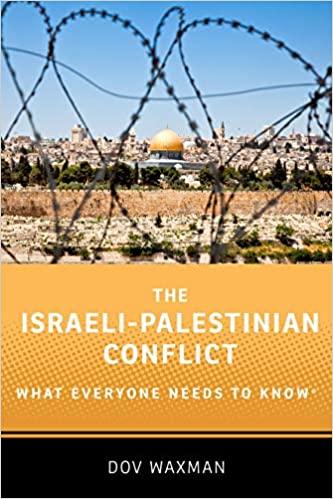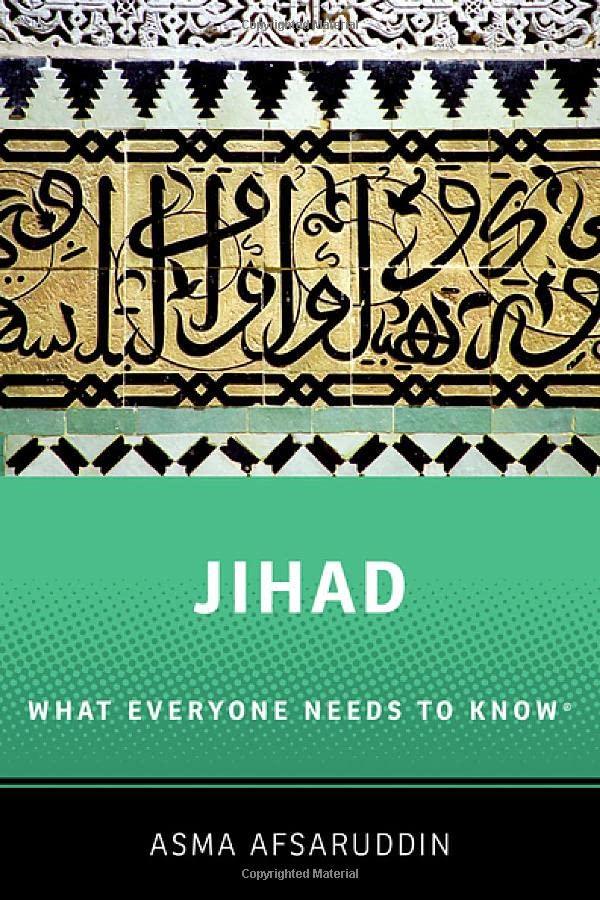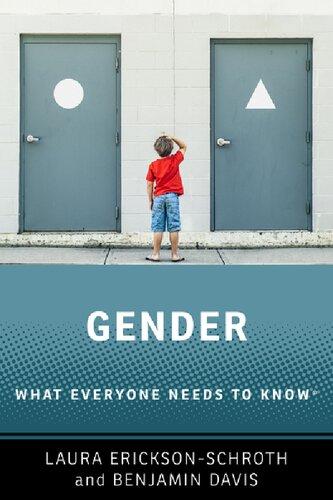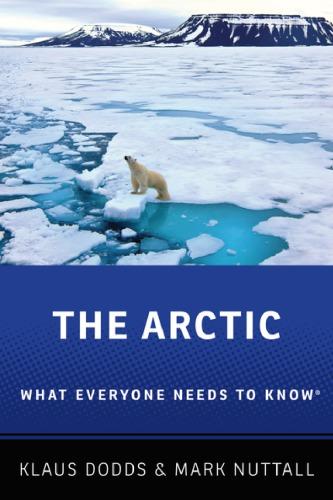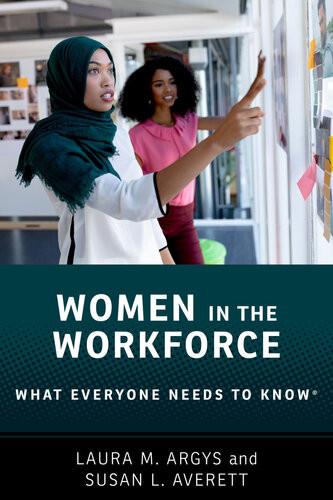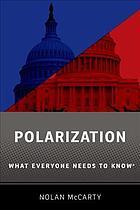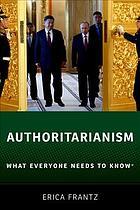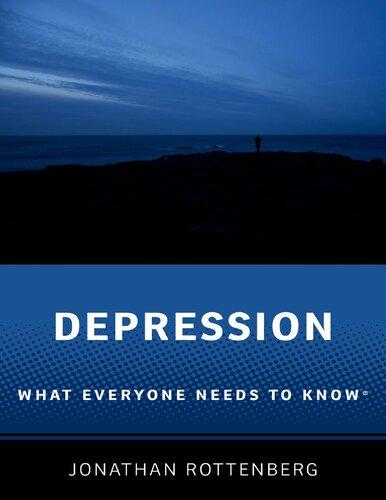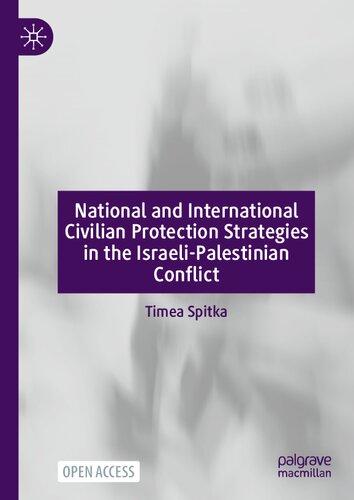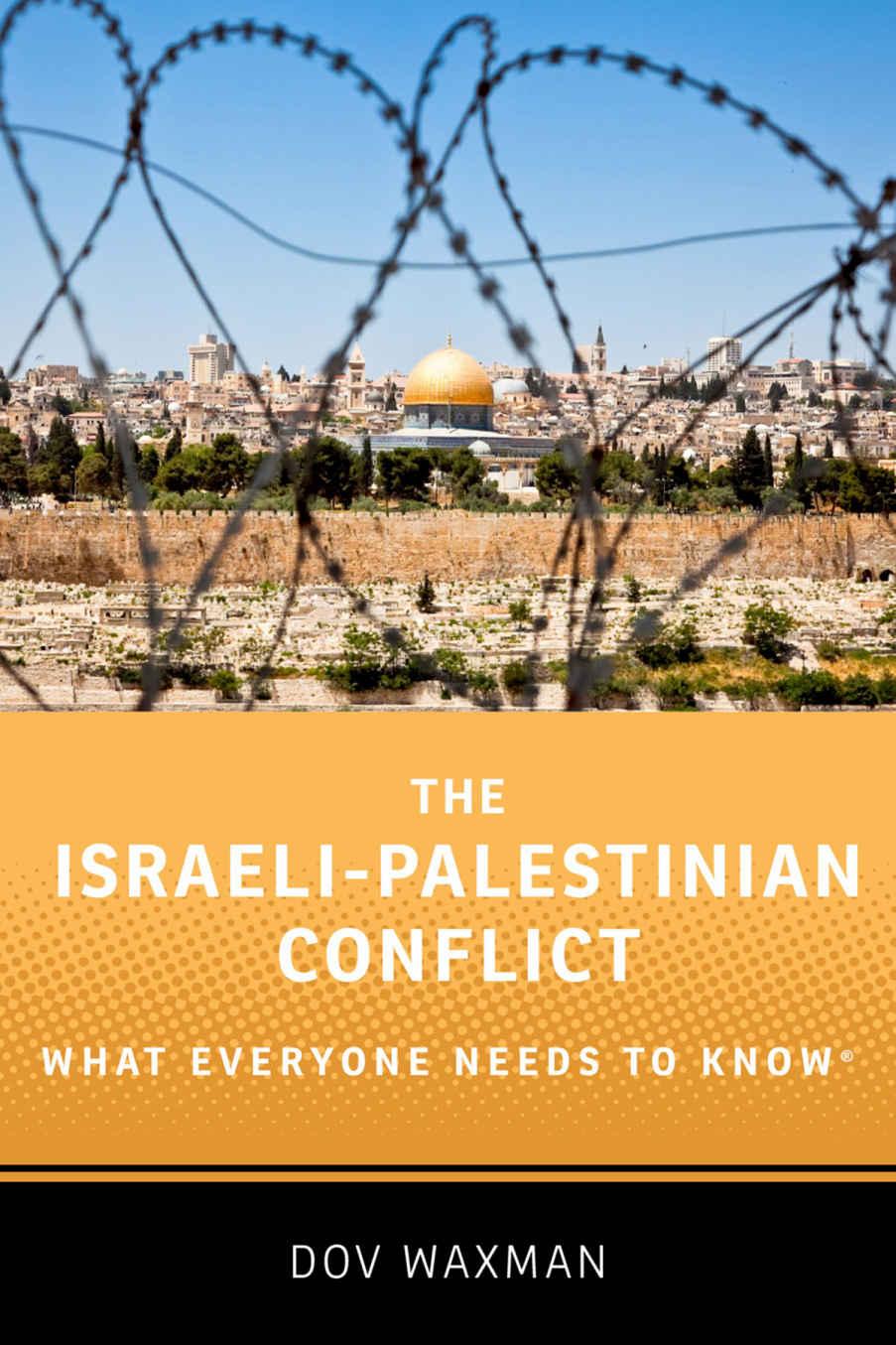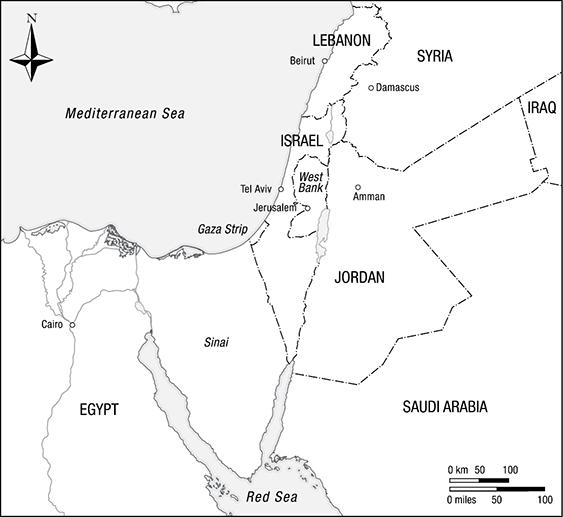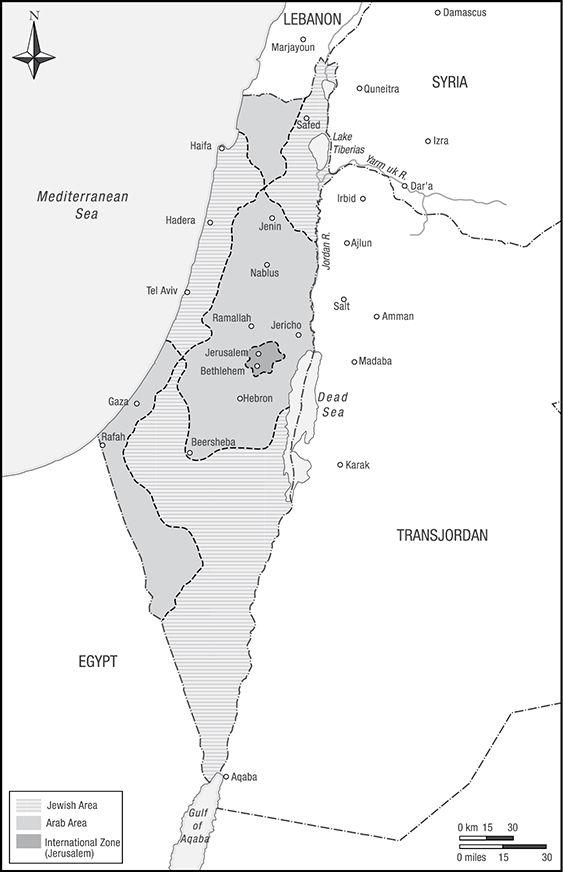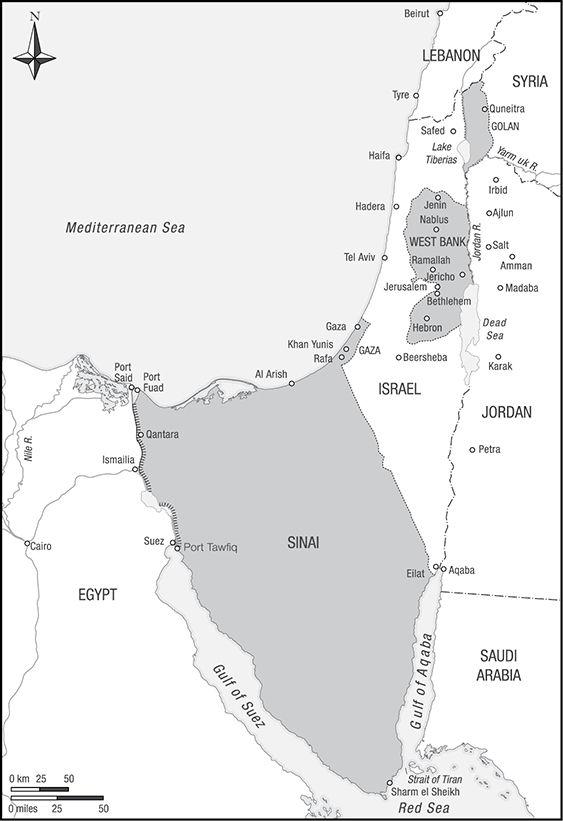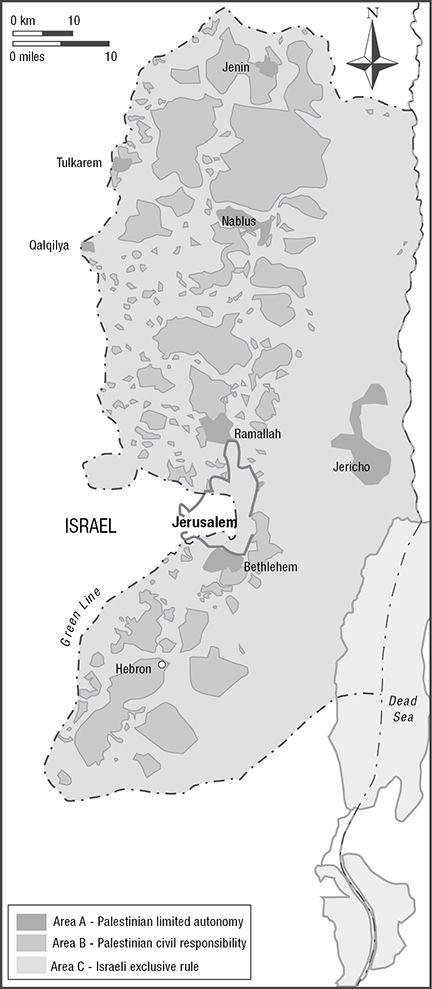CONTENTS
PREFACE MAPS
Present-day map of Israel and its neighbors
United Nations Partition Plan, 1947
Israel and the Occupied Territories, 1967
West Bank divided into Areas A, B, and C, 1995
1 THE BASICS
Who is the conflict between?
Who are the Israelis?
What’s the difference between Israelis and Jews?
Who are the Palestinians?
What’s the difference between Palestinians and Arabs?
What are Palestinians and Israelis fighting about?
What role does religion play in the conflict?
What is the size of the territory?
Who was there first?
2 THE BEGINNING OF THE CONFLICT
When did the conflict begin?
Why did many European Jews move to Palestine in the late nineteenth and early twentieth centuries?
What is Zionism?
What gave rise to Zionism?
Who was Theodor Herzl?
Was Zionism a form of colonialism?
What role did Britain play in the beginning of the conflict?
Who was Hajj Amin Al-Husseini?
Was Israel created because of the Holocaust?
What was the United Nations Partition Plan for Palestine?
3 THE ARAB-ISRAELI WARS
How many Arab-Israeli wars have there been, and how many people have been killed?
Why did Arab states go to war against Israel in 1948?
What were the major consequences of the war of 1947–1949 for Israel and the Palestinians?
Why did many Palestinians become refugees in 1948? Who is to blame?
What was the 1956 Sinai War?
What caused the 1967 war?
What was the impact of the 1967 war?
Why was the 1973 war significant?
Why did Israel invade Lebanon in 1982?
What were the consequences of the First Lebanon War?
4 THE PEACE PROCESS
When was the first attempt to make peace?
What were the Camp David Accords, and how did they come about?
When did Israeli-Palestinian peace talks begin?
What are the Oslo Accords?
Why did Israel and the PLO sign the Oslo Accords?
How did the assassination of Yitzhak Rabin impact the Oslo peace process?
Why did the Oslo peace process collapse?
What are the main issues that need to be resolved in an IsraeliPalestinian peace agreement?
What role has the United States played in the peace process?
5 THE OCCUPIED TERRITORIES
Why are the West Bank and Gaza Strip considered “occupied territories”?
What restrictions does Israeli military rule place upon Palestinians in the West Bank?
Why has Israel built a long barrier in the West Bank?
Why are there Israeli settlements in the West Bank, and why do Israelis choose to live in them?
Why are Israeli settlements so controversial?
Why did Israel withdraw from the Gaza Strip?
How did Hamas come to power in Gaza?
How has Hamas’s rule and Israel’s blockade affected Palestinians in Gaza?
Why has Gaza frequently become a battlefield between Hamas and Israel over the past decade?
CONCLUSION: THE LONG PATH TO PEACE
Is a two-state solution still possible?
Is a one-state solution possible?
If neither solution is possible, then how can the conflict be resolved or at least reduced?
INDEX
PREFACE
The Israeli-Palestinian conflict is not the world’s deadliest conflict, nor is it the most destabilizing—the war in Syria has killed vastly more people and wreaked more havoc in just a few years than the Israeli-Palestinian conflict has in decades. But the dispute between Israel and the Palestinians is one of the longest-running conflicts in the world and possibly the most intractable. Despite numerous diplomatic efforts and many years of intermittent peace talks, the Israeli-Palestinian conflict remains stubbornly unresolved, fueling violence on an almost daily basis and intense animosity on both sides. Indeed, to many people, including many Israelis and Palestinians, the Israeli-Palestinian conflict seems interminable and insoluble.
Not only is the Israeli-Palestinian conflict perhaps the world’s most intractable conflict, it is also by far the most controversial. No other conflict in the world attracts as much attention, stirs as intense passions, and generates as many news headlines as the IsraeliPalestinian conflict. It is an issue that animates and often angers people who are far removed from the conflict itself. The IsraeliPalestinian conflict is a topic of lively debates in parliaments around the world and in international organizations, of heated arguments on college campuses, and even of bitter disagreements between friends and family members. The high degree of interest in the conflict around the world and the controversy surrounding it is even more remarkable given the fact that the conflict is over a relatively small piece of land and directly involves a relatively small number of people. Many other conflicts of much greater scale and severity receive far less attention.
For whatever reason, the Israeli-Palestinian conflict has captured the world’s attention. But despite, or perhaps even because of this interest, the conflict is still poorly understood. This is partially due to
the fact that it has become so highly politicized. Instead of trying to understand the conflict in all its complexity, there is a common tendency to take sides. Thus many people adopt a one-sided, simplified view of the conflict, sometimes seeing it as a kind of morality play between good and evil. Such a view obscures the nuances of the conflict and detracts from understanding the perspectives, narratives, and experiences of both sides in the conflict. It’s impossible to think about the Israeli-Palestinian conflict completely objectively as we all inevitably bring our own personal backgrounds, beliefs, and biases to the subject, but we can try to shed our preconceptions and prejudices, reevaluate our personal opinions, and even set aside our political, religious, and social allegiances to achieve a reasonably fair, relatively impartial understanding of the conflict. It has undoubtedly become more difficult to do so at a time of increasing political partisanship and polarization, but it is even more necessary.
Another reason why there is so much misunderstanding about the conflict is that most people rely upon the media to inform them about it. The problem with this is not that the media is biased, although it might be, but that it is generally superficial and focused on contemporary events. The context and background to these events, including the long history preceding them, is often missing in media reporting and commentary about the conflict. Consequently, most people only focus on the conflict today and know little, if anything, about its origins and history. All too often, they think the main issue is simply Israeli settlements, Palestinian terrorism, or whatever else is in the news. Finally, if people do seek a deeper understanding of the conflict, and a less biased one, they can quickly become overwhelmed with learning about all the events, issues, and personalities involved. The long duration and sheer complexity of the conflict deter many people who might be interested to learn more about it. The controversial nature of the conflict also means that people are sometimes too wary or intimidated to even ask questions about it.
For all these reasons, there is an acute need for a book that answers the questions many people might have about the IsraeliPalestinian conflict and helps them to make sense of the issue. After
years of teaching university students about the conflict and giving public lectures on the topic, I have collected the questions I’ve been asked most frequently and tried to provide clear, concise answers to them in this book. By answering the most commonly asked questions about the conflict, the purpose of this book is to provide the reader with a helpful guide to what is a highly charged and complex issue. The book aims to provide the reader with important facts and knowledge about the conflict and offer some basic insights. It also seeks to clear up popular misunderstandings and misconceptions about the conflict and its protagonists so that people can have a more accurate and factual understanding about it. The question-and-answer format of this book also enables readers to find it easily accessible. The book thus allows readers with no background knowledge of the subject to have their questions about the conflict answered, and it can serve as a quick reference guide for those who already have some knowledge. It can be read from start to finish or by “dipping in” and picking whichever questions and answers are of interest.
The chapters in this book cover the evolution of the conflict from the rise of the Zionist movement in the late nineteenth century, through the various Arab-Israeli wars and the peace process, and up to the present day. In covering the history of the conflict, rather than provide a detailed description of all its events and developments, as traditional narrative histories of the conflict try to do, this book focuses on explaining the major events and the impacts they have had upon the conflict. Since Israelis and Palestinians often view these events very differently, the book also highlights these contrasting popular narratives because they not only play a key role in shaping their collective beliefs about the conflict but also fuel the conflict itself. What matters, in other words, is not simply what happened and why, but also how it is collectively interpreted and remembered by Israelis and Palestinians. In addition to analyzing the critical events and accompanying narratives that have shaped the Israeli-Palestinian conflict, the book will also examine the major issues that must be resolved to peacefully end the conflict. In doing so, it will try to explain why the conflict has been so hard to resolve. This book, however, cannot cover the entirety of the conflict or
examine every facet of it. By necessity, it concentrates only on the major events and issues and omits a lot of detail. I do not offer a comprehensive history of the conflict—there are already many such books available—nor an in-depth study of the many issues at stake in the conflict.
Through its selectivity and brevity in covering the conflict, this book may be subject to criticism over what is omitted or given little attention. Such criticism is especially likely since the subject of the book is so controversial. Indeed, writing a book about the IsraeliPalestinian conflict, let alone one that proclaims to offer “what everyone needs to know” about it, is a daunting task. Partisans of both sides are bound to take issue with some of my answers, and accusations of unfairness or bias are almost inevitable. Although I’ve attempted to be as impartial as possible, the book is unavoidably informed by my own views and values and shaped by my upbringing, education, and experiences. Even my choice of words and terminology is inherently political (for instance, my use of the term “West Bank” rather than the biblical name for the area, “Judea and Samaria”). Nevertheless, throughout the book, I’ve tried to present the different perspectives and narratives of Israelis and Palestinians and avoid “playing the blame game.” I have done so not only because this book is meant to be a primer, not a polemic, but also because I believe there is enough blame to go around. Neither side is wholly innocent or completely guilty, and both sides have legitimate rights and needs. As the recently deceased Israeli novelist Amos Oz once put it, “The Israeli-Palestinian conflict is a tragedy; it is a clash between right and right. And therefore it’s not black and white. Sometimes, recently it is indeed a clash between wrong and wrong.” Fundamentally, I hope this book will enable readers to better understand this ongoing tragedy and that greater understanding can help finally end the conflict.
THE BASICS
Who is the conflict between?
To understand any conflict, the first and most basic task is to accurately identify the parties involved. When it comes to the IsraeliPalestinian conflict, this is not as straightforward as it might seem. As with so much about the conflict, there is disagreement over who are the main protagonists. Is it just a conflict between Israelis and Palestinians, or is it a broader conflict between Israel and the Arab world or even between Jews and Muslims worldwide? How you answer this question shapes not only how you perceive the conflict but also whom you might sympathize with. Many people tend to instinctively sympathize with the supposed underdog, just as they root for the underdog in a sports match. If Israel is perceived as a tiny state in the Middle East up against the combined might of the Arab world, consisting of twenty-two Arab states and over three hundred million Arabs, then it appears to be the underdog in need of support. This is how most Israelis have generally viewed the conflict along with many of their supporters around the world. Conversely, if the conflict is seen as simply pitting Israel against the Palestinians, then sympathy shifts toward the Palestinians as they are the weaker party. Most Palestinians and their supporters tend to see it this way, especially in recent decades.
So who’s right? Well, to some extent they both are because there are actually two distinct conflicts that are overlapping and interrelated. These two conflicts are often confused or sometimes deliberately conflated. The first conflict—which is the main focus of this book—is between Israelis (primarily Israeli Jews) and
Palestinians. This is the principal and most enduring conflict. It started around a century ago as an intercommunal conflict between Arabs and Zionist Jews living in the territory then known as Palestine. Fundamentally, it was a conflict between two communities whose dominant nationalist movements both claimed the right to exercise national self-determination and assume sovereignty over the same piece of land. After the Zionists succeeded in establishing their state in 1948, what was initially a conflict between two groups competing for statehood developed into a conflict between the State of Israel and Palestinians, who remained stateless. That dynamic continues to this day as Palestinians still aspire to national selfdetermination, although the conflict for control over land, resources, and religious sites now largely focuses on a much smaller geographic area than pre-1948 Palestine, consisting of the West Bank, East Jerusalem, and the Gaza Strip—areas that Israel captured in the 1967 Arab-Israeli war (the “Six-Day War”).
In addition to the Israeli-Palestinian conflict, there is a second conflict, separate but interconnected with the first, which can be designated as the “Arab-Israeli conflict.” This is an interstate conflict between Israel and the Arab states of the Middle East. The broader Arab-Israeli conflict began immediately after Israel’s founding in 1948, and for the next three decades it overshadowed and even eclipsed the narrower Israeli-Palestinian conflict. For many years, the Arab states categorically rejected Israel’s right to exist, and they called for the elimination of what they referred to as the “Zionist entity” from their midst. This arose partly from a genuine sense of solidarity with the Palestinians, whose cause resonates widely in the Arab world, but also because Arab regimes, though authoritarian, were (and are) sensitive to domestic public opinion, which is strongly pro-Palestinian. The Arab states’ opposition to Israel has also been motivated by Arab nationalist ideology, including pan-Arabism, which views the creation of Israel as another attempt by Western powers to colonize Arab land and weaken and divide the Arab world. Israel’s very existence, therefore, was seen as an affront to Arab dignity and a major impediment to Arab unity and power.
Although the Arab states have often claimed to be acting on behalf of the Palestinians, their actions have been primarily determined by
their own national interests (as defined by their regimes). Despite their solidarity with the Palestinians and their rhetoric of Arab unity, in practice each of the Arab states has pursued their own policies vis-àvis Israel, and some have been much more combative and aggressive than others. All the Arab states have lent varying degrees of support to the Palestinian cause, and for decades they collectively boycotted Israel, but not all of them have actually fought against it. Just a few Arab states have engaged in full warfare against Israel— its immediate neighbors, Egypt, Syria, and Jordan—while others have contributed troops on occasion, if only token amounts (Lebanon, Iraq, Algeria, Morocco, Yemen, and Saudi Arabia). The most common forms of support the Arab states have given to the Palestinians have been diplomatic and financial. The wealthy, oil-rich Arab states of the Gulf have been the biggest benefactors of the Palestinians. Saudi Arabia has provided the most aid, amounting to many billions of dollars over the years. This largesse is motivated by Saudi Arabia’s commitment to Arab and Islamic causes, which is one of the foundations of the Saudi royal family’s domestic legitimacy and their alliance with the country’s Wahhabi religious establishment. But it also serves Saudi Arabia’s strategic interests and desire to lead the Sunni Muslim world since it is the birthplace of Islam and home of its two holiest mosques (in Mecca and Medina).
While the Saudis continue to donate a lot of money to the Palestinians, their attitude toward Israel has shifted over time—from completely rejecting its existence to proposing its own peace initiative in 2002 (which was subsequently adopted by the Arab League and endorsed by the Organization of Islamic Cooperation). This proposal, now known as the “Arab Peace Initiative,” promised to end the Arab-Israeli conflict and establish full diplomatic relations with Israel if it withdrew from all the territory it occupied, accepted the establishment of a Palestinian state, and reached a “just solution to the Palestinian refugee problem.” The Arab Peace Initiative made clear that the Arab world was ready to make peace with Israel if it resolved its conflict with the Palestinians and its territorial disputes with Syria and Lebanon. Although the Israeli government at the time dismissed the proposal, it remains on the table to this day.
Not only has Saudi Arabia offered to make peace with Israel and encouraged the rest of the Arab world to do the same, in recent years it has surreptitiously developed relations with the Jewish state, despite still not officially recognizing it. This is largely because it shares Israel’s antipathy toward Iran (in accordance with the old proverb, “the enemy of my enemy is my friend”). Their mutual hostility toward Iran has produced a thaw in relations between the Saudi and Israeli governments, and even raised some hopes of a new anti-Iranian alliance that would transcend the Arab-Israeli conflict and possibly reshape the strategic landscape of the Middle East. As long as the Israeli-Palestinian conflict remains unresolved, such hopes are probably premature at best. Nevertheless, the burgeoning relationship between Israel and Saudi Arabia and some other Arab Gulf states (particularly the United Arab Emirates and Oman) clearly demonstrates the diminishing importance of the ArabIsraeli conflict in the region’s affairs. It is no longer the greatest source of tension or instability in the Middle East, as it once was. In fact, since the late 1970s the Arab-Israeli conflict has been winding down, though it has not entirely abated. Egypt and Jordan have made peace with Israel (in 1979 and 1994 respectively), leaving only Syria and Lebanon as the so-called frontline Arab states still officially at war with Israel. Most other Arab states have, however reluctantly, come to terms with Israel’s existence in the region, and a few now maintain discreet diplomatic, commercial, and even security relationships with Israel. Yet, though the Arab-Israeli conflict has waned, popular sentiment across the Arab world remains strongly supportive of the Palestinians and hostile to Israel.
While Israel’s relations with Arab states have, in most cases, gradually improved over the past four decades (not without some serious setbacks), its relationship with Iran has severely deteriorated. They were once allies, but after the Iranian revolution in 1979 that overthrew the Pahlavi monarchy and established an Islamic Republic, the Iranian regime made hostility to Israel and support for the Palestinians a core tenet of its radical ideology and a central pillar of its foreign policy (this has been a way for the regime to shore up its domestic support, increase its popularity across the Muslim world, and bolster its regional ambitions). The Iranian regime
has demonized Israel in its official discourse (referring to it as “little Satan”), rejected its right to exist, and repeatedly called for its destruction. The Islamic Republic of Iran’s strident opposition to Israel has been more than merely rhetorical. It has funneled large sums of money and weapons to militant Islamist groups fighting against Israel—most notably, the Lebanese group Hezbollah and the Palestinian group Hamas—and to Syria, Israel’s main Arab adversary. The so-called Axis of Resistance that Iran has forged with Syria, Hezbollah, and Hamas has become Israel’s primary threat. Indeed, the Israeli government and most Israelis are currently more preoccupied with this threat than with Israel’s ongoing conflict with the Palestinians. Iran is now their biggest concern, not the Palestinians or the Arab states.
Who are the Israelis?
Israelis are citizens of the State of Israel. Israeli citizenship is granted to anyone with an Israeli parent, whether or not they are born in Israel; to anyone born in Israel if they apply for citizenship between the ages of 18 and 25 and have been living there for five consecutive years; and to any Jew who immigrates to Israel under the Law of Return (passed in 1950). A 1970 amendment to the Law of Return also grants the children and grandchildren of any Jew, as well as their spouses, the right to immigrate to Israel and receive citizenship. This has enabled hundreds of thousands of non-Jews (by the criteria of Orthodox Judaism) to immigrate to Israel, most of them from the former Soviet Union (FSU)—part of a wave of emigration to Israel from the USSR that began in the 1970s and accelerated in the 1990s after the end of the Cold War and the collapse of the Soviet Union. Today, there are around 1.2 million “Russian” Israelis (immigrants from the FSU and its successor states), comprising almost 15 percent of Israel’s total population of 8.9 million citizens (this figure includes Israelis living in the West Bank). They constitute the largest immigrant community in Israel and the third-largest Russianspeaking community in the world living outside the FSU. Though integrated into Israeli society, they maintain a separate subculture in
Israel with their own Russian-language newspapers and television stations. They also have their own political party, Yisrael Beiteinu (“Israel Is Our Home”), whose right-wing secular nationalist orientation regarding the Israeli-Palestinian conflict has made it both a political ally and an electoral competitor with Israel’s dominant right-wing party, Likud. Most members of Israel’s large Russianspeaking community are politically on the right—largely because they tend to favor a hawkish approach to the Israeli-Palestinian conflict and oppose making territorial concessions to the Palestinians. Hence this community wields considerable political clout and has had a significant role in moving the Israeli electorate to the right over the past decade.
In addition to immigrants from the former Soviet Union, there are also sizable, but smaller, communities of Israelis from Ethiopia (approximately 125,000), India (approximately 80,000), and dozens of other countries. Indeed, Israel’s population is a mosaic of different ethnicities—much more diverse than the popular image of Israelis as mostly European in origin. While this was once true—when Israel was founded in 1948, the vast majority of its Jewish citizens were of European origin—over time, due largely to immigration, Israel’s population has significantly grown and diversified. It is now more than ten times larger than it was in 1948, and more than half of the country’s Jewish population is of at least partial Middle Eastern or North African origin.
Nowadays, Israeli Jews are roughly divided between those of European descent (Ashkenazim) and those of Middle Eastern or North African descent (Mizrahim, i.e., “Eastern” Jews, sometimes also called Sephardim). Due to increasing intermarriage between the two ethnic groups, many younger Israeli Jews are of mixed MizrahiAshkenazi ancestry. This is one way in which the longstanding ethnic divide between Ashkenazim and Mizrahim in Israel—with the former occupying the upper echelon of Israeli society and traditionally dominating Israeli politics—has gradually narrowed over the years, although it has not entirely disappeared (Mizrahi Jews still tend to be less affluent and proportionally less well represented than Ashkenazi Jews in the Israeli political and cultural establishment).
Another major change in Israel’s population over the years is the growing number of native-born Israelis (called Sabras in Hebrew). When the state was established, most of its citizens were foreignborn, with only 35 percent of its Jewish citizens actually born there. In 2017, by contrast, around three-quarters of Israelis were born in Israel, more than half of them to parents who were also born in Israel. Israeli society, therefore, is no longer the predominantly immigrant society it once was. Successive waves of mass Jewish immigration from around the world transformed Israeli society, beginning in the immediate aftermath of the state’s founding when the population more than doubled with the arrival of roughly 700,000 Jews from war-torn Europe, most of them Holocaust survivors, and Jews from Libya, Yemen, and Iraq. This was followed by the immigration of Jews from other Arab countries (mainly, Morocco, Tunisia, and Egypt) in the 1950s and 1960s, and later Jews came from Ethiopia and the FSU. Although Jews still immigrate to Israel, their numbers have significantly declined, despite ongoing efforts by the Israeli government, and some nongovernmental organizations, to incentivize Jewish immigration (while immigration has declined, so too has emigration).
The demographic makeup of Israeli society has, therefore, changed considerably over the past seven decades of Israel’s existence. Who Israelis are, in other words, is quite different today than who they once were. They used to be mostly European immigrants; now they are mostly Israeli-born and ethnically mixed. What has not changed, however, is the fact that most Israelis are Jewish (75 percent), whether or not they are religious. Although the proportion of Israel’s population that is not Jewish has increased from less than one in five Israeli citizens in the past to one in four today, the state still has a large, and fairly stable, Jewish majority (maintaining this majority has always been one of its central objectives). Israel’s Jewish majority is politically, economically, and culturally dominant—so much so, in fact, that the term “Israeli” is basically synonymous with being Jewish in common Israeli discourse.
Around 21 percent of Israeli citizens are Arab (1.8 million people in total). Israel’s Arab population, like its Jewish population, is diverse.
It is composed of different religious and ethnic groups—principally, Muslims, Christians, Druzes, and Bedouins—each with its own distinct sense of identity. Muslims are the largest group, making up more than three-quarters of the Arab population. Bedouins (once seminomadic shepherds) are a subgroup within the Muslim population, numbering around 170,000, and mostly residing in the southern Negev (Naqab) desert region of the country and northern Galilee. Christian Arabs, about 9 percent of the total Arab population, are themselves divided into many different sects. Finally, the Druzes (also roughly 9 percent of the Arab population) are the most distinct group, generally having quite different attitudes than the rest of the Arab minority. Unlike other Arab citizens of Israel, Druzes are conscripted into the Israeli military (like Jews), something that has alienated them from other Arabs in Israel (a very small minority of whom—mostly Bedouins—volunteer for military service).
Israel’s Arab population has grown in size and confidence over the years. They have also grown more politically assertive, defending their individual rights as citizens of Israel, demanding their collective rights as a minority, and increasingly calling for the abolition of Israel’s self-definition as a Jewish state. Many “Israeli Arabs” (as Israeli governments and Israeli Jews generally refer to them), perhaps most, have embraced Palestinian nationalism and prefer to identify themselves as Palestinian Israelis or simply as Palestinian citizens of Israel. Their close identification with Palestinians living in the West Bank, the Gaza Strip, and East Jerusalem (who are not citizens of Israel), and their support for the Palestinian national cause, has been a source of growing tension with Israeli Jews, who tend to regard this as disloyal and threatening. Relations between Israel’s Jewish majority and Arab minority have never been good, with high levels of fear and mistrust on both sides. But they have become even worse in recent years as Arabs have become more successful, more visible, and more outspoken. This has provoked a backlash from many Israeli Jews who perceive them as a demographic and security threat, a potential “fifth column” in Israel’s ongoing conflict with the Palestinians.
Arab citizens of Israel have the same democratic rights as Israeli Jews—for instance, they can vote for and are elected to the Knesset,
they serve as mayors and judges, and they freely express their views and practice their own religion—but they have suffered from discrimination and neglect by the state (as recognized in a groundbreaking report issued in 2003 by the Orr Commission, an Israeli government-appointed body headed by a former Supreme Court judge). To be sure, in some respects Arab citizens of Israel have undoubtedly benefited from living there. Their living standards have dramatically improved since Israel’s establishment, and their health, education, and income have greatly increased (their life expectancy, for instance, has risen by thirty years). Yet, despite this progress, there is still systematic inequality between Arabs and Jews in most aspects of life. While Arabs are no longer the completely ghettoized minority they were during the first two decades of Israel’s existence when most lived under repressive military rule, they remain a self-conscious, often stigmatized minority, still subject to the suspicion and at times outright hostility of members of the Jewish majority. They are largely excluded from Israeli policymaking and marginalized in Israeli society and politics. To this day, Jews and Arabs in Israel generally reside in different areas, attend different schools, and rarely socialize. Indeed, the divide between Jewish and Arab citizens of Israel is the deepest social cleavage within the country. There are many divisions in Israeli society (such as that between secular and religious Jews), but the social and political divide between the Jewish majority and the Arab minority is the biggest. Whether Arabs can be truly accepted as Israelis, with full equality, and completely identify as Israelis is still an open question.
What’s the difference between Israelis and Jews?
It is essential to clearly distinguish between Israelis and Jews as these terms are frequently confused (in popular Palestinian discourse, for example, Israelis are often referred to as Jews). The term “Israeli” denotes a person’s citizenship, whereas the term “Jew” describes a person’s religion and/or ethnic background. While the definition of a Jew is contested among Jews themselves, especially now that intermarriage between Jews and non-Jews is common, there is a general consensus that a Jew is
someone who practices Judaism (there is no agreement on the version of Judaism practiced) or someone who is born to a Jewish mother (or a Jewish father, according to more progressive streams of Judaism, like the Reform and Reconstructionist movements). It is thus possible, and indeed quite common, for a Jew to be completely secular and still consider themselves, and be considered by other Jews, to be Jewish. Jews are defined not only by religion but also by descent. Hence, Jews are an ethno-religious group that shares a common religious and cultural heritage and a belief in their common ancestry (i.e., the ancient Israelites). Jews are not, however, a race (contrary to racial antisemitism and Nazi ideology). Whether Jews are a nation has been a topic of prolonged Jewish debate for more than two hundred years, since the advent of modern nationalism. Some Jews, especially those in Israel, claim that Jews are a nation —modern Zionism is based upon this fundamental claim—but others believe that while Jews are a people, they are not really a nation.
Based on this brief definition of who Jews are, it should be clear that they are not the same as Israelis. There are Israelis who are not Jewish, and there are Jews who are not Israeli. Most Israelis are Jewish, but a significant minority of them, about a quarter, are not. While there are nearly 6.6 million Jews living in Israel, there are even more living in other countries. The total Jewish population in the world is estimated to be between fourteen and fifteen million (just 0.2 percent of the world’s population). More than 80 percent of world Jewry is concentrated in Israel and the United States. Israel’s share of the world’s Jewish population has skyrocketed since the country’s founding, from 6 percent in 1948 to 45 percent in 2018. Even so, to this day most Jews in the world still do not live in Israel. Instead, they remain in what is called the “diaspora” (a term derived from the Greek word meaning “to scatter about”). There is also now a growing Israeli diaspora, with estimates of its size varying widely from around three hundred thousand people to more than a million, most of them living in the United States, Russia, Canada, the United Kingdom, and Germany.
The Jewish diaspora has existed for more than 2,600 years since its beginnings during the Greek and Roman empires. During this long history, Jewish communities of varying sizes have been
established all over the world. Today, there are Jewish communities in around a hundred different countries, some numbering just a few dozen Jews (or even less) and others hundreds of thousands (the largest Jewish communities are in North America and Western Europe). By far the biggest Jewish community in the diaspora is the American Jewish community, comprising roughly six to seven million Jews, which is about 40 percent of world Jewry and almost 70 percent of diaspora Jewry. Given the diversity of the Jewish diaspora, it is impossible to generalize about its relationship with Israel. Different Jewish communities have different relationships with Israel. Some are close—marked by a strong emotional attachment to Israel, a high volume and frequency of visits to Israel, and a lot of political and financial support for the country—while others are more distant. The kind of relationship that exists depends upon many factors, such as the size, location, and demographics of the community, its history, and its relationship with the society and state in which it is based. In states that are hostile to Israel, for example, it is difficult and sometimes dangerous for members of the local Jewish community to maintain active relations with Israel (the Soviet Union once contained the third-largest Jewish community in the world, but until the late 1980s, Jews there were forbidden from maintaining any kind of relations with Israel).
It would be remiss, therefore, to assume that all diaspora Jews identify with Israel or support it. Many do, but not all, and there are also many who are ambivalent, alienated, or just apathetic. Although there is widespread support for Israel in the Jewish diaspora, there is also growing criticism of its government’s policies, especially regarding Palestinians. This is particularly the case among American Jews, who are becoming increasingly divided over Israel. Compared with their counterparts in Israel, American Jews are, on average, more liberal politically, religiously, and socially. Growing numbers of them are married to non-Jews or are the offspring of mixed marriages (in Israel, by contrast, Jews cannot legally marry nonJews). The practice of Judaism in the United States also tends to differ from that in Israel, where an Orthodox rabbinical establishment wields control over most aspects of Jewish religious life. These differences mean that Jews in Israel and the United States do not
necessarily share the same political opinions, cultural values, religious beliefs, or even Jewish identities. Nor do Jews elsewhere (which is one reason why antisemitic stereotypes are false). Hence, not only is it essential to distinguish between Israelis and Jews, it is also crucial to distinguish between Jews in Israel and Jews living in other countries.
Who are the Palestinians?
There are few nations in the world as misunderstood and maligned as the Palestinians. For decades, their very existence was doubted and denied, not only by Israeli Jews who long believed, as Israel’s prime minister Golda Meir famously put it in an interview in 1969, “there was no such thing as Palestinians,” but also by many Americans and Europeans who only saw Palestinians as Arabs, not as a distinct nation. Once Israelis, Americans, and Europeans finally began to recognize the existence of a Palestinian nation (it was not until 1978 that Israel officially acknowledged Palestinian nationhood), Palestinians were often perceived, and depicted in the media and popular culture, solely as terrorists and fanatics. This common stereotype of Palestinians still appears in the media, and it prevails in the imagination of many Israeli Jews and their supporters abroad. Needless to say, it is both inaccurate—only a tiny percentage of Palestinians have ever engaged in terrorism (although many have supported it at times)—and demeaning.
To begin with, then, it is necessary to dispel the belief that Palestinians are not really a nation. It is impossible to understand the Israeli-Palestinian conflict without recognizing the simple fact that Palestinians see themselves as a nation. Unlike many nations, the Palestinians do not have a state of their own. Their collective demand for statehood is one of the driving forces of the conflict, but this does not mean that they lack a national identity. Palestinian national identity has developed despite the fact that Palestinians are stateless and geographically dispersed. In fact, the condition of statelessness, dispersal, and exile has been central to the formation and definition of Palestinian national identity. In this respect, Palestinian identity is like Jewish identity, which has also been
